
If you—and, consequently, your garden—have sworn off daylilies (Hemerocallis cvs., USDA Hardiness Zones 3–10) because you hate the typical orange and yellow varieties, then you need to give them another chance. Options abound: from vibrant to pastel shades of color, various bloom shapes and sizes, and heights from tall to small.
But looks aren’t the only thing you’ll be getting. Daylilies are easy to grow, tolerate most soil conditions, and are drought tolerant. They come with few pests or diseases (though deer love the blooms and also have been known to nibble their tender leaves). They like, ideally, at least four to six hours of light. You can even find varieties with bloom times ranging from spring until fall.
Intrigued? You should be. Take a look at some of the spectacular daylilies that could be yours. Prices vary depending upon the supplier, so shop around for the best deal. If you think anything costing more than $10 is too steep, remember that daylilies can easily be divided every few years.
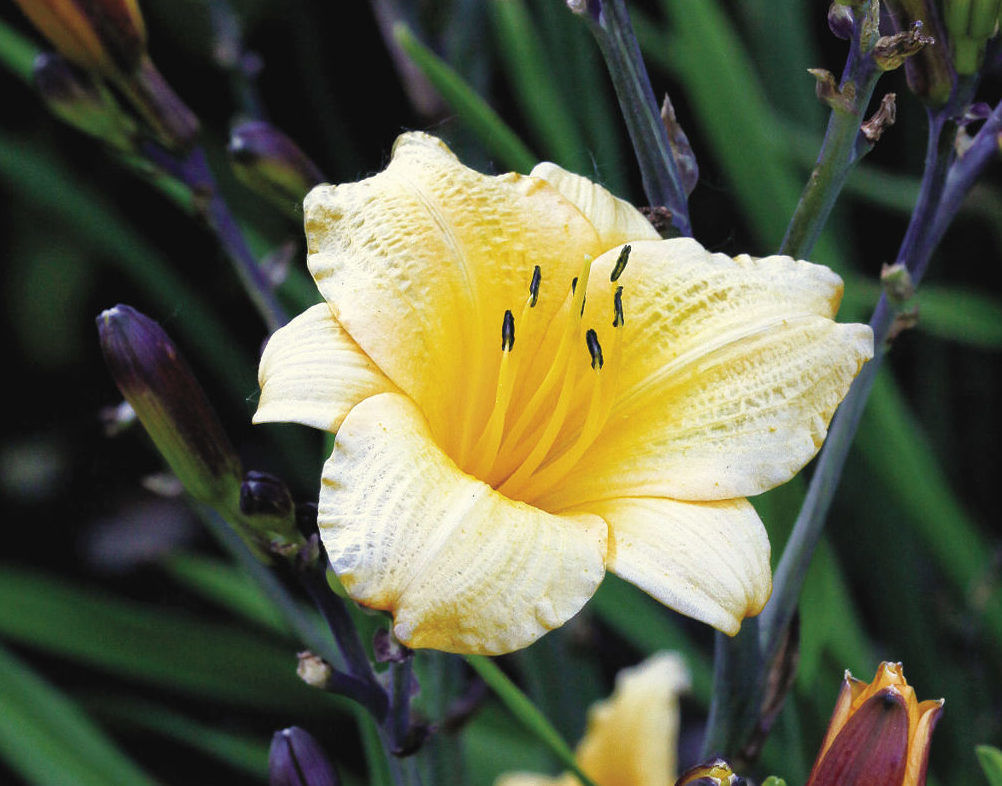
‘Sir Black Stem’
The name says it all. The dark black stems of this daylily aren’t dead, but they do make a stark contrast against the vibrant blooms.
Size: 2 feet tall; 2 1/2-inch-wide bloom
Bloom time: Late spring to early summer; rebloomer
‘Beaufort Slim Pitkin’

The strawberry shortcake of daylilies, this pink-and-red beauty is pretty enough to eat. But resist the urge—if you eat it, you won’t get to enjoy its charm in the garden.
Size: 3 feet tall; 7 1/2-inch-wide bloom
Bloom time: Early summer to summer; rebloomer
‘Jan’s Twister’
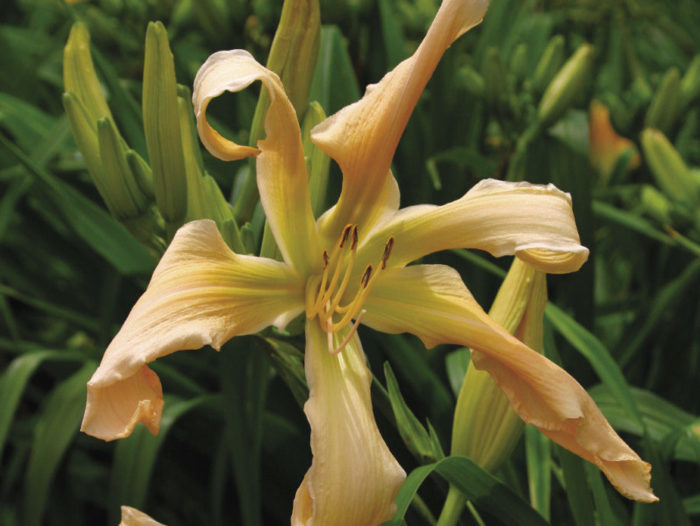
Do you like your plants a little twisted? This crispate (pinched-, twisted-, or quilled-petal) daylily adds a unique spin to an already attractive bloom.
Size: 28 inches tall; 11 1/2-inch-wide bloom
Bloom time: Early summer to summer; rebloomer
‘Blueberry Breakfast’

It’s rare to find a bloom that resembles the soft hue of a blueberry’s flesh. One look at this dainty creation and your mouth is sure to start watering.
Size: 22 inches tall; 5-inch-wide bloom
Bloom time: Summer
‘Rainbow Spangles’
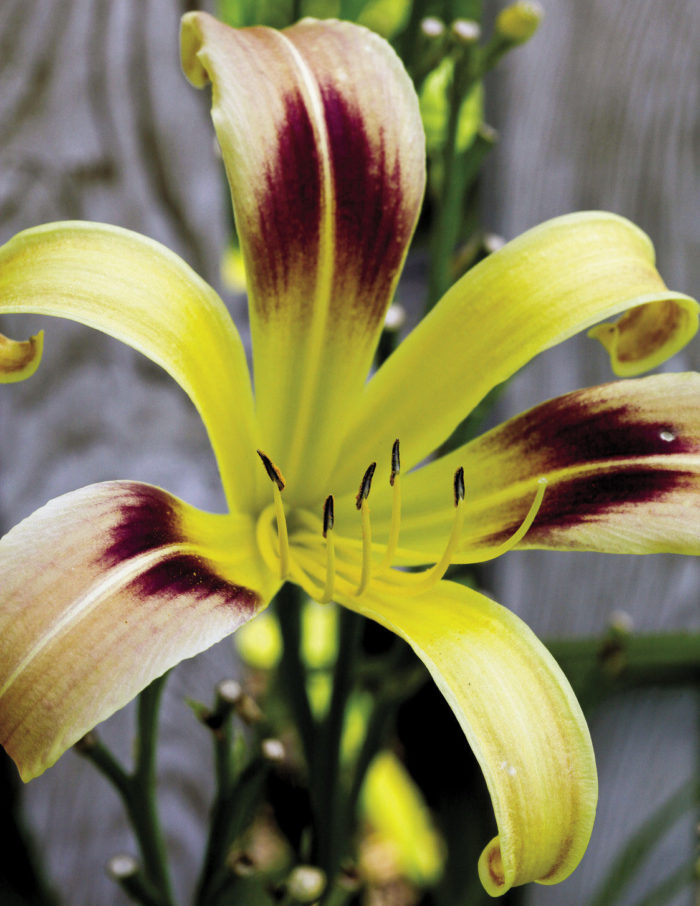
With this spider daylily (a daylily whose petal length is at least four times its width), you don’t have to choose between solid or multicolored flower petals. Thin yellow sepals contrast perfectly with the wider, more colorful petals in between.
Size: 30 inches tall; 7-inch-wide bloom
Bloom time: Early summer to summer; rebloomer
‘Starman’s Fantasy’

This spider daylily’s petals curve and stretch like an arachnid ready to move. But its intense red-and-yellow glow, along with its unique shape, will make you want to keep this daylily around.
Size: 30 inches tall; 8-inch-wide bloom
Bloom time: Summer
‘Oceans Eleven’

The eye of this daylily mimics the appearance of a drop of red wine spreading on a napkin. It’s trimmed in deep maroon, but if you look closely, you can also see colors ranging from purple to nearly blue—a characteristic highly sought after by daylily enthusiasts and hybridizers alike.
Size: 20 inches tall; 5-inch-wide bloom
Bloom time: Summer; rebloomer
‘Savannah Banana Split’

A yellow daylily? Boring. But the unique shape of this spider daylily makes it a little less predictable and a lot more desirable.
Size: 28 inches tall; 10 1/2-inch-wide bloom
Bloom time: Summer; rebloomer
‘Blackthorne’

The contrasting dark and light colors of this daylily make it a standout in any garden. Its winter hardiness also makes it worth trying in cold areas (Zones 5 and colder).
Size: 26 inches tall; 4 3/8-inch-wide bloom
Bloom time: Early summer to summer
‘Sunday Gloves’

Bring visitors to your garden the same way you do to the kitchen: Lead them by the nose. The off-white blooms of this daylily are highly fragrant.
Size: 27 inches tall; 5 1/4-inch-wide bloom
Bloom time: Early summer to summer; rebloomer
‘Dances with Giraffes’

Did you notice the size of this baby? This is one tall daylily, with one awesome bloom to top it off.
Size: 5 feet tall; 8-inch-wide bloom
Bloom time: Summer to late summer
‘Radiant Greetings’
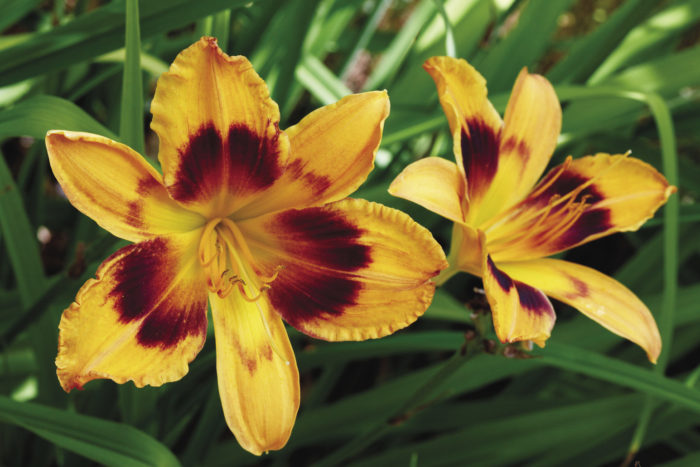
There’s no better way to welcome visitors to your garden than with this hot-colored daylily. No timid beauty, this bloomer screams to be noticed.
Size: 38 inches tall; 5 1/2-inch-wide bloom
Bloom time: Summer; rebloomer
‘Charles Johnston’

‘Charles Johnston’ will have you seeing red—in a good way. It’s a true beauty, from near or far. It also has won the Award of Merit from the American Hemerocallis Society (AHS), given annually to 12 daylilies that have been proven “to perform well over a wide geographic area.”
Size: 2 feet tall; 6-inch-wide bloom
Bloom time: Early summer to summer; rebloomer
‘Heavenly Danger Zone’

The toothy edge that surrounds the petals of this daylily is all the rage in daylily hybridizing. It’s sure to bring admiration from garden visitors, as well.
Size: 34 inches tall; 6 1/2-inch-wide bloom
Bloom time: Summer to late summer
‘Grape Twizzler’

If the name alone doesn’t say it, this daylily is for you if you’re looking for twisty, curvy blooms. And the lush purple color isn’t bad, either.
Size: 30 inches tall; 9-inch-wide bloom
Bloom time: Early summer to summer; rebloomer
‘Chorus Line’

“Reliable” is this daylily’s middle name. It won the AHS’s Annie T. Giles Award for most outstanding small flower daylily and the L. Ernest Plouf Award for consistent fragrance.
Size: 20 inches tall; 3 1/2-inch-wide bloom
Bloom time: Late spring to early summer; rebloomer
‘Condilla’
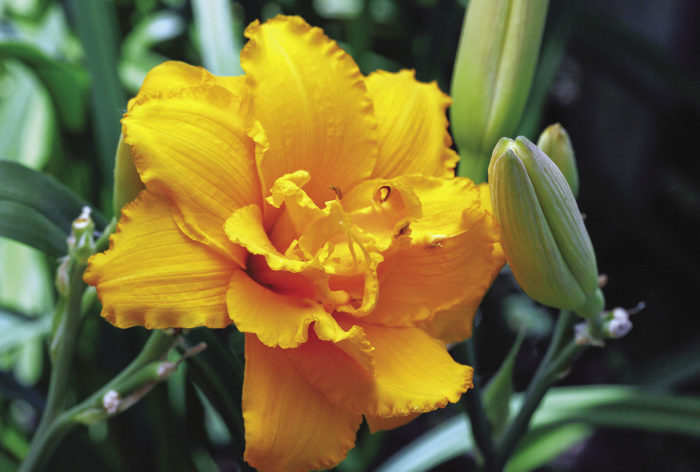
One is good; two is better. This vibrant yellow double daylily creates not just a splash but an explosion of color in the garden.
Size: 20 inches tall; 4 1/2-inch-wide bloom
Bloom time: Early summer to summer
‘Indian Giver’

Popularity isn’t everything, but it’s a good way to pick a reliable plant. Registered with the AHS in 1991, ‘Indian Giver’ was voted among the top 20 daylilies of 2004 by AHS members. Its popularity is still going strong.
Size: 26 inches tall; 4 1/2-inch-wide bloom
Bloom time: Early summer to summer; rebloomer
Daylily Breakdown

1. A STAMEN is the male sex organ of a flower. Daylilies typically have six stamens, which each supply pollen. Most new daylily hybrids are created by taking the stamen of a daylily with interesting traits and using it to pollinate the pistil of another unique daylily.
2. The PISTIL is the female sex organ of a flower. Daylilies have one pistil, which requires pollen from a stamen (either from the same daylily or a different daylily) for pollination to occur. It’s important not to confuse the pistil and the stamen in daylily hybridization.
3. The THROAT is the center region of a daylily. It is typically a shade of yellow, orange, or green and differs from the overall color of the bloom. This is one of the attributes you can affect by hybridizing.
4. The SCAPE of a daylily is the tall center stalk— often with branching—at the top of which blooms form. When shopping for daylilies, extensive branching of the scape is a good sign that the daylily will produce abundant blooms.
5. A PROLIFERATION is a small clump of tiny leaves that forms off the scape of a daylily; it looks like a baby plant. If removed and rooted, it will produce a duplicate of the original plant.
6. A FAN is a section of a daylily plant that has its own root system. When shopping for daylilies, it’s a better deal if you find one with multiple fans for division.
7. The CROWN is the white section at the base of a daylily between the leaves and the roots. A daylily division should have this to form roots and leaves.
Brandi Spade is an associate editor with a love for colorful blooms.
Photos, except where noted: Brandi Spade
Sources:
- Cottage Gardens, Medina, N.Y.; 585-798-5441; daylily.net
- Ctdaylily, Wallingford, Conn.; 203-294-9520; ctdaylily.com
- Daylily Manor, New Augusta, Miss.; 601-964-3314
- Hornbaker Gardens, Princeton, Ill.; 815-659-3282; hornbakergardens.com
- Oakes Daylilies, Corryton, Tenn.; 800-532-9545; oakesdaylilies.com
- Stout Gardens at Dancingtree, Oklahoma City, Okla.; 405-642-4190; stoutgardens.com
- Vermont Flower Farm, Marshfield, Vt.; 802-426-3505; vermontflowerfarm.com


















Comments
Log in or create an account to post a comment.
Sign up Log in